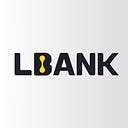Understanding the Order Book: How to Read an Exchange Order Book

Order books are an integral part of trading platforms, providing a visual representation of the current market demand and supply. An order book consists of three main elements: the bid (buy orders), the ask (sell orders), and the spread (the difference between the bid and ask prices). Understanding these components is important for interpreting crypto market actions. This guide will explain the basis of the crypto order book and how to read and trade it.
What is an Order Book?
The order book is essentially a real-time overview of all the buy and sell orders on a particular exchange. In the context of cryptocurrency trading, where millions of users are constantly entering and exiting positions, the order book acts as a snapshot of market sentiment. It helps traders understand the demand and supply mechanisms at various price levels.
On LBank, and other standard exchanges with advanced trading functionalities, the order book is divided into two halves: buy orders (bids) and sell orders (asks). The lower section displays buy orders, where traders are looking to purchase the asset at a specific price. Conversely, the upper section shows sell orders, indicating the prices at which traders are willing to sell their assets.
Types of Orders
Order books feature two primary types of orders: maker orders and taker orders. Maker orders, typically limit orders, are added to the order book, shaping market depth. On the other hand, taker orders, which involve market purchases or sales, are executed immediately and reflected in trade history.
The order book operates as a queue, with new orders appearing at specific price levels. Importantly, a buy order can only be placed below the current market price, while a sell order must be above the current market price.
How to Read the Order Book
The order book might seem like a chaotic display of numbers and bars, but understanding its components can provide a view into market trends. The green bars represent buy orders, while the red bars represent sell orders. These bars fluctuate in real-time as traders enter or withdraw their orders.
The order book can be customized for different resolutions, allowing traders to view it at a granular level or a higher overview. The finer the resolution, the more detailed the information about individual orders. Conversely, a higher-level overview provides a broader perspective, highlighting clusters of prices where a significant number of orders are concentrated.
Buyers and Sellers
Examining the order book reveals interesting patterns about the intentions of buyers and sellers. For buying orders, represented by green bars in the lower section, traders are keen on obtaining the asset at a lower price. The order book might show clusters of buy orders in a particular price range, indicating a collective interest in acquiring the asset at those levels.
On the sell side, represented by red bars in the upper section, sellers may have different objectives. Some might be looking to take profits at higher prices, while others could be initiating short positions. Understanding these concepts provides traders with a deeper comprehension of market psychology.
Understanding Market Actions
The order book’s central region, where buy and sell orders intersect, displays the average price. This price is derived from the best bid (buy order) and the best ask (sell order). As the order book constantly evolves with new orders, the average price changes dynamically.
Traders can actively participate in shaping the order book by placing limited orders. When a trader sets a buy or sell order at a specific price, it becomes part of the order book. These orders are known as “makers.” On the other hand, executing a market order, where a trader buys or sells immediately at the current market price, removes orders from the book, classifying the trader as a “taker.”
Understanding the distinction between makers and takers is crucial for those diving into the intricacies of day-to-day trading. Makers contribute to the liquidity of the market, while takers actively consume liquidity by executing immediate trades.
Reading the Depth Chart
Beyond the order book, traders often refer to the depth chart for a visual representation of market depth. The depth chart illustrates cumulative buy and sell orders at different price levels. Analyzing the depth chart allows traders to gauge the overall strength of buyers or sellers in the market.
A concentrated area of buy orders, referred to as a “buy wall,” might indicate strong support at that price level. On the other hand, a dense cluster of sell orders, or a “sell wall,” suggests potential resistance.
Wrapping Up
Overall, understanding the concept of reading an exchange order book is an essential skill for cryptocurrency traders. While order books provide a glimpse into the market actions, relying solely on them for trading decisions can be risky. Combining this trading strategy with technical analysis and market indicators can provide a more accurate view of market conditions.
Disclaimer: The opinions expressed in this blog are solely those of the writer and not of this platform.
